
Museum Exhibits From The Indian Culture Museum
We have compiled an extensive list of artifacts that showcase the considerable history of India. We beleive that culture is extremely important, and is very insightful to our past, which is why we have introduced the first permanent exhibit in this venue. Admission is free to the public. Enjoy!
Click on the tabs below to access each of our exhibits:
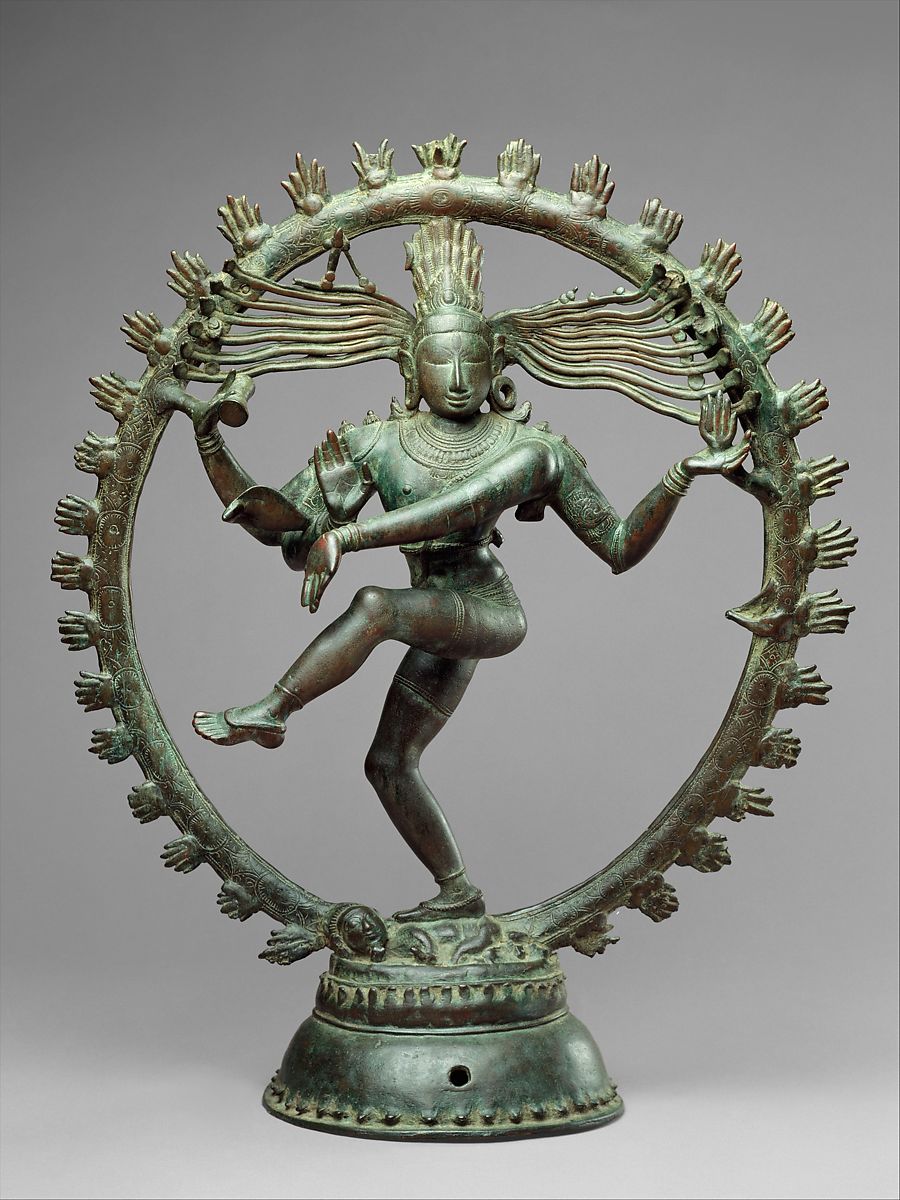
Nataraja Sculpture
Made by Sembiyan Mahadevi (Chola Queen)-12th century CE
The famous Shiva Dance- Nataraja and the bronze sculpture of the Natatraj of the Chola period is one of the most significant religious sculptures, and beholds the statue even today. Made with the Lost wax technique, the Chola bronzes bring together the art of metallurgy and the aesthetics of the sacred and the sensuous dance come out in a remarkable fashion.
Sculpting as an art has evolved to a much greater extent since prehistoric times, and today a lot of variations can be seen in this, in terms of materials, aesthetic, and even themes. The sculptors are more profound these days and that can be seen in the installations today.
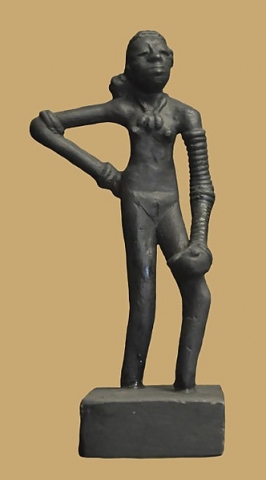
Dancing Girl
Made by Mohen Jo Daro in 2500 BC
The statue of the famous 'Dancing Girl ', found to be in the times of Harappa. The statue, in bronze, is 4.1 in tall, and depicts a naked young woman or girl with stylized proportions standing in a confident, naturalistic pose. Dancing Girl is well-regarded as a work of art, and is a cultural artifact of the Indus Valley Civilisation.
The statue is regarded as one of the oldest and magnificent artwork till date. It is utterly significant to decipher the origin of the First Civilization and the settlements in the Indian Subcontinent.
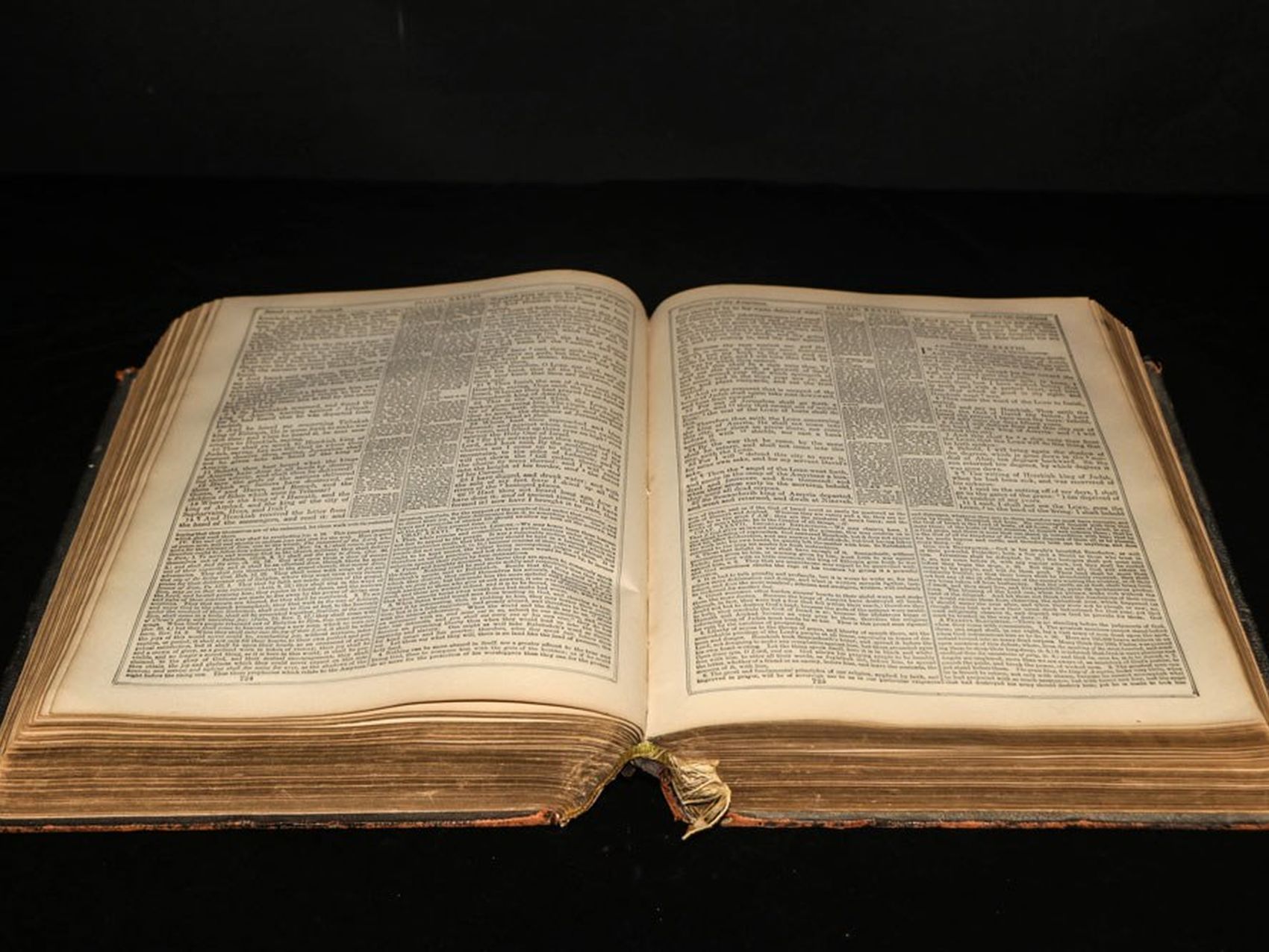
Mahabharata
Written by Vyasa
The Mahabharata is an ancient Indian epic where the main story revolves around two branches of a family - the Pandavas and Kauravas - who, in the Kurukshetra War, battle for the throne of Hastinapura. Interwoven into this narrative are several smaller stories about people dead or living, and philosophical discourses. Krishna-Dwaipayan Vyasa, himself a character in the epic, composed it; as, according to tradition, he dictated the verses and Ganesha wrote them down. At 100,000 verses, it is the longest epic poem ever written, generally thought to have been composed in the 4th century BCE or earlier. The events in the epic play out in the Indian subcontinent and surrounding areas. It was first narrated by a student of Vyasa at a snake-sacrifice of the great-grandson of one of the major characters of the story. Including within it the Bhagavad Gita, the Mahabharata is one of the most important texts of ancient Indian, indeed world, literature.
The Story
Shantanu, the king of Hastinapur, was married to Ganga (personification of the Ganges) with whom he had a son called Devavrat. Several years later, when Devavrat had grown up to be an accomplished prince, Shantanu fell in love with Satyavati. Her father refused to let her marry the king unless the king promised that Satyavati's son and descendants would inherit the throne. Unwilling to deny Devavrat his rights, Shantanu declined to do so but the prince, on coming to know of the matter, rode over to Satyavati's house, vowed to renounce the throne and to remain celibate throughout his life. The prince then took Satyavati home to the palace so that the king, his father, could marry her. On account of the terrible vow that he'd taken that day, Devavrat came to be known as Bheeshm. Shantanu was so pleased with his son that he granted to Devavrat the boon of choosing the time of his own death.
In time, Shantanu and Satyavati had two sons. Soon thereafter, Shantanu died. Satyavati's sons still being minors, the affairs of the kingdom were managed by Bheeshm and Satyavati. By the time these sons reached adulthood, the elder one had died in a skirmish with some gandharvas (heavenly beings) so the younger son, Vichitravirya, was enthroned. Bheeshm then abducted the three princesses of a neighbouring kingdom and brought them over to Hastinapur to be wedded to Vichitravirya. The eldest of these princesses declared that she was in love with someone else, so she was let go; the two other princesses were married to Vichitravirya who died soon afterwards, childless.
So that the family line did not die out, Satyavati summoned her son Vyasa to impregnate the two queens. Vyasa had been born to Satyavati of a great sage named Parashar before her marriage to Shantanu. According to the laws of the day, a child born to an unwed mother was taken to be a step-child of the mother's husband; by that token, Vyasa could be considered Shantanu's son and could be used to perpetuate the Kuru clan that ruled Hastinapur. Thus, by the Niyog custom, the two queens each had a son of Vyasa: to the elder queen was born a blind son called Dhritarashtra, and to the younger was born an otherwise healthy but extremely pale son called Pandu. To a maid of these queens was born a son of Vyasa called Vidur. Bheeshm brought up these three boys with great care. Dhritarashtra grew up to be the strongest of all princes in the country, Pandu was extremely skilled in warfare and archery, and Vidur knew all the branches of learning, politics, and statesmanship.
With the boys grown, it was now time to fill up the empty throne of Hastinapur. Dhritarashtra, the eldest, was bypassed because the laws barred a disabled person from being king. Pandu, instead, was crowned. Bheeshm negotiated Dhritarashtra's marriage with Gandhari, and Pandu's with Kunti and Madri. Pandu expanded the kingdom by conquering the sorrounding areas, and brought in considerable war booty. With things running smoothly in the country, and with its coffers full, Pandu asked his elder brother to look after the state affairs, and retired to the forests with his two wives for some time off.
A few years later, Kunti returned to Hastinapur. With her were five little boys, and the bodies of Pandu and Madri. The five boys were the sons of Pandu, born to his two wives through the Niyog custom from gods: the eldest was born of Dharma, the second of Vayu, the third of Indra, and the youngest - twins - of the Ashvins. In the meanwhile, Dhritarashtra and Gandhari too had had children of their own: 100 sons and one daughter. The Kuru elders performed the last rites for Pandu and Madri, and Kunti and the children were welcomed into the palace.
All of the 105 princes were subsequently entrusted to the care of a teacher: Kripa at first and, additionally, Drona later. Drona's school at Hastinapur attracted several other boys; Karna, of the Suta clan was one such boy. It was here that hostilities quickly developed between the sons of Dhritarashtra (collectively called the Kauravas, patronymic of their ancestor Kuru) and the sons of Pandu (collectively called the Pandavas, patronymic of their father).
Duryodhana, the eldest Kaurava, tried - and failed - to poison Bheem, the second Pandava. Karna, because of his rivalry in archery with the third Pandava, Arjuna, allied himself with Duryodhan. In time, the princes learnt all they could from their teachers, and the Kuru elders decided to hold a public skills exhibition of the princes. It was during this exhibition that the citizens became plainly aware of the hostilities between the two branches of the royal family: Duryodhan and Bheem had a mace fight that had to be stopped before things turned ugly, Karna - uninvited as he was not a Kuru prince - challenged Arjuna, was insulted on account of his non-royal birth, and was crowned king of a vassal state on the spot by Duryodhan. It was also around this time that questions began to be raised about Dhritarashtra occupying the throne, since he was supposed to be holding it only in trust for Pandu, the crowned king. To keep peace in the realm, Dhritarashtra declared the eldest Pandava, Yudhishthir, as the crown prince and heir apparent.
After the wedding ceremonies at Panchal were over, the Hastinapur palace invited the Pandavas and their bride back. Dhritarashtra made a great show of happiness on discovering that the Pandavas were alive after all, and he partitioned the kingdom, giving them a huge tract of barren land to settle in and rule over. The Pandavas transformed this land into a paradise. Yudhishthir was crowned there, and he performed a sacrifice that involved all of the kings of the land to accept - either voluntarily or by force - his suzerainty. The new kingdom, Indraprastha, prospered.
Meanwhile, the Pandavas had entered into an agreement among themselves regarding Draupadi: she was to be wife of each Pandava, by turn, for a year. If any Pandava was to enter the room where she was present with her husband-of-that-year, that Pandava was to be exiled for 12 years. It so happened that once Draupadi and Yudhishthir, her husband of that year, were present in the armoury when Arjuna entered it to take his bow and arrows. Consequently, he went off in exile during which he toured the entire country, down to its southernmost tip, and married three princesses he met along the way.
The prosperity of Indraprastha and the power of the Pandavas was not something that Duryodhan liked. He invited Yudhisthir to a dice game and got his uncle, Shakuni, to play on his (Duryodhan's) behalf. Shakuni was an accomplished player; Yudhishthir staked - and lost - step by step his entire wealth, his kingdom, his brothers, himself, and Draupadi. Draupadi was dragged into the dice hall and insulted. There was an attempt to disrobe her, and Bheem lost his temper and vowed to kill each and every one of the Kauravas. Things came to such a boil that Dhritarashtra intervened unwillingly, gave the kingdom and their freedom back to the Pandavas and Draupadi, and set them off back to Indraprastha. This angered Duryodhan, who talked his father around, and invited Yudhishthir to another dice game. This time, the condition was that the loser would go on a 12-year exile followed by a year of life incognito. If they were to be discovered during this incognito period, the loser would have to repeat the 12+1 cycle. The dice game was played. Yudhishthir lost again.
For this exile, the Pandavas left their ageing mother Kunti behind at Hastinapur, in Vidur's place. They lived in forests, hunted game, and visited holy spots. At around this time, Yudhishthir asked Arjuna to go to the heavens in quest of celestial weapons because, by now, it was apparent that their kingdom would not be returned to them peacefully after the exile and that they would have to fight for it. Arjuna did so, and not only did he learn the techniques of several divine weapons from the gods, he also learnt how to sing and dance from the gandharvas.
After 12 years, the Pandavas went incognito for a year. During this one-year period, they lived in the Virat kingdom. Yudhishthir took up employment as a king's counsellor, Bheem worked in the royal kitchens, Arjuna turned himself into a eunuch and taught the palace maidens how to sing and dance, the twins worked at the royal stables, and Draupadi became a handmaiden to the queen. At the end of the incognito period - during which they were not discovered despite Duryodhan's best efforts - the Pandavas revealed themselves. The Virat king was overwhelmed; he offered his daughter in marriage to Arjuna but he declined since he had been her dance teacher the past year and students were akin to children. The princess was married, instead, to Arjuna's son Abhimanyu.
At this wedding ceremony, a large number of Pandava allies gathered to draw out a war strategy. Meanwhile, emissaries had been sent to Hastinapur to demand Indraprastha back but the missions had failed. Krishna himself went on a peace mission and failed. Duryodhan refused to give away as much land as was covered by the point of a needle, let alone the five villages proposed by the peace missions. The Kauravas also gathered their allies around them, and even broke away a key Pandava ally - the maternal uncle of the Pandava twins - by trickery. War became inevitable.
Just before the war bugle was sounded, Arjuna saw arrayed before him his relatives: his great-grandfather Bheeshm who had practically brought him up, his teachers Kripa and Drona, his brothers the Kauravas, and, for a moment, his resolution wavered. Krishna, the warrior par excellence, had given up arms for this war and had elected to be Arjuna's charioteer. To him Arjuna said, "Take me back, Krishna. I can't kill these people. They're my father, my brothers, my teachers, my uncles, my sons. What good is a kingdom that's gained at the cost of their lives?" Then followed a philosophical discourse that has today become a separate book on its own - the Bhagavad Gita. Krishna explained the impermanence of life to Arjuna, and the importance of doing one's duty and of sticking to the right path. Arjuna picked up his bow again.
The battle raged for 18 days. The army totalled 18 akshauhinis, 7 on the Panadava side and 11 on the Kaurava (1 akshauhini = 21,870 chariots + 21,870 elephants + 65,610 horses + 109,350 soldiers on foot). Casualties on both sides were high. When it all ended, the Pandavas had won the war but lost almost everyone they held dear. Duryodhan and all of the Kauravas had died, as had all of the menfolk of Draupadi's family, including all of her sons by the Pandavas. The now-dead Karna was revealed to be a son of Kunti's from before her marriage to Pandu, and thus, the eldest Pandava and the rightful heir to the throne. The grand old man, Bheeshm, lay dying; their teacher Drona was dead as were several kinsfolk related to them either by blood or by marriage. In about 18 days, the entire country lost almost three generations of its men. It was a war not seen on a scale before, it was the Great Indian war, the Maha-bharat.
After the war, Yudhishthir became king of Hastinapur and Indraprastha. The Pandavas ruled for 36 years, after which they abdicated in favour of Abhimanyu's son, Parikshit. The Pandavas and Draupadi proceeded on foot to the Himalayas, intending to live out their last days climbing the slopes heavenwards. One by one, they fell on this last journey and their spirits ascended to the heavens. Years later, Parikshit's son succeeded his father as king. He held a big sacrifice, at which this entire story was recited for the first time by a disciple of Vyasa called Vaishampayan.
The Legacy
Since that time, this story has been retold countless times, expanded upon, and retold again. The Mahabharata remains popular to this day in India. It has been adapted and recast in contemporary mode in several films and plays. Children continue to be named after the characters in the epic. The Bhagvad Gita is one of the holiest of Hindu scriptures. Beyond India, the Mahabharata story is popular in south-east Asia in cultures that were influenced by Hinduism such as Indonesia and Malaysia.
Brahmacharis
Painted by Amrita Sher-Gil in 1937
In this painting, the Indian artist depicts three brahmacharis men with two children sitting on the ground. As per Hindu culture, the Brahmachari is a male who practices brahmacharya.
Many scholars consider Brahmacharis as one of Amrita Sher Gil's greatest masterpieces. The painting is a part of the South Indian trilogy that resulted from the artist's sojourn in the South in 1937. Sher-Gil's experience of the Ajanta murals inspired her visual language at this time particularly in the figuration and gestures.
.jpg)
Yashoda Krishna
Painted by Raja Ravi Varma in 1895
This print from the Ravi Varma Press derived from a painting by Raja Ravi Varma depicts Krishna on the lap of an adoring Yashodha. A servant maid looks on.
Krishna is the 9th incarnation of Lord Vishnu who was born in the Yadava Dynasty to Vasudeva and Devaki. The eighth child was Krishna, a manifestation of Lord Vishnu. As soon as the baby was born, he incarnated himself as the Lord and instructed them to exchange him with the child born to Nandagopa and Yashodha born at Gokula. After instructing Vasudeva, Lord Vishnu re-assumed the form of a baby. Later, with the help of Mayadevi, in the middle of the night, Krishna was exchanged with Yashodha’s baby. Ever since then, Krishna grew up with his foster mother Yashodha.
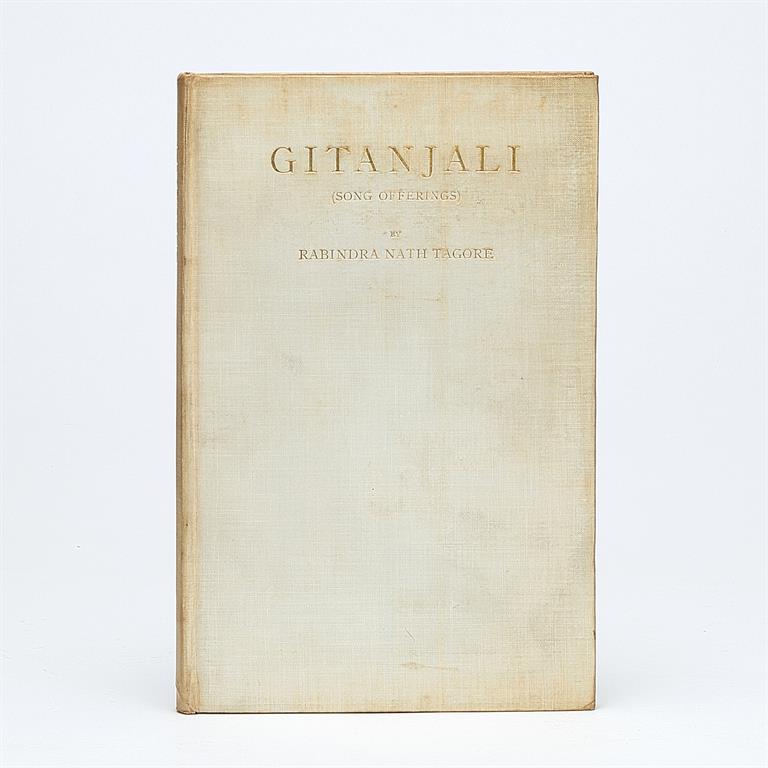
Gitanjali
Written by Bengali poet Rabindranath Tagore
Gitanjali or “The Song Offerings” is a reflection of Rabindranath's consciousness, wisdom & philosophy. The original work, which was published on August 14 1910, comprised 157 songs. The English version was released in November 1912 by the India Society of London. It contained translations of 53 poems from the original Bengali Gitanjali.
Vr Pooja Room
The pooja room, also known as the prayer room is a sacred space in most Indian homes. It is a customised space dedicated to conducting spiritual activities in daily prayers, poojas, etc. to worship God.
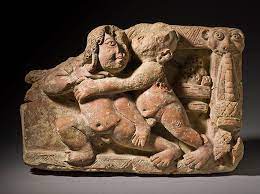
Wrestling Statue
Wrestling was a popular sport in Ancient India. In the statue above, there are many amazing ancient Indian wrestlers such as Mahabharata, Bhima, Jarasandha, Duryodhan, Karna, etc.
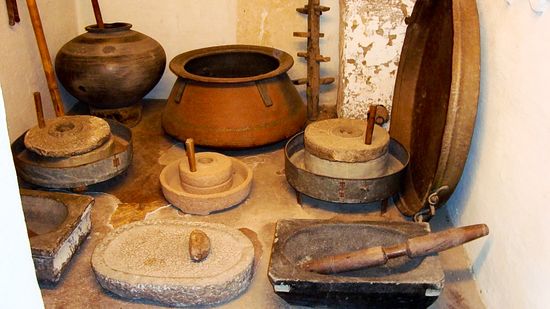
Stone&Metal Products
The artifacts above show an array of stone and metal products. These products were used for farming as well as regular household items.
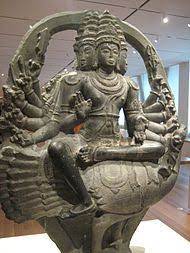
Karthikeya Statue
Karthikeya, the god of war and General of the Army of the gods, is known for his extraordinary strength. He is shown to have 12 arms.
Necklace
This ancient Indian necklace dates back nearly 5,000 years. It is lined with pendants of banded agate and jade beads suspended by a thick gold wire that passes through a perfectly drilled hole in each bead.
Un-Humped Bull
Terracotta bull figurines are commonly found in settlements of the Harappan culture. This terracotta bull figurine is entirely handmade. A knife was possibly used to shape parts of the body and after a thin cream slip was put over the entire figurine. A garland is placed around the neck of the bull.
Railing Pillar Depicting Asita’s Visit:
In the early days of Buddhism, Buddha was worshiped through Aniconism which meant that certain objects were worshiped that didn’t show him in the human form. This phase of Aniconic worship culminated into the iconic or the anthropomorphic worship. In this Casing slab, Buddha Siddhartha has been depicted symbolically by a pair of footprints on the cloth held by Asita. Sage Asita visited King Suddhodhana at his palace when Buddha was born as prince Siddhartha in the Shakya Clan. Upon seeing the auspicious signs on the baby’s body, Asita prophesied that he would either become a great king or a great monk, and the latter came true. This episode is shown on the part of this relief panel.
Buddha’s Relics on Elephants
This railing stone represents the last episode of Buddha’s life. According to Mahaparinirvana Sutta, just after the death of Buddha, the 8 ruling clans of North-eastern India claimed his remains on grounds of kinship. To avoid war, Drona, a wise Brahmin, suggested that Buddha’s relics be equally distributed amongst all the eight clans. The offer was accepted and the sacred relics were divided and transported by the kings, amidst great pomp, to various kingdoms, where Stupas were built to enshrine them. This frieze represents a royal procession with four caparisoned elephants, with the kings balancing the reliquary caskets, while driving the elephants with the goad. The procession starts with dancers accompanied by female musicians playing on drums, castanets, and a harp. According to textual references, the Mallas celebrated the death of Buddha with dance and music, as he died at the age of eighty. Even today in India, the funeral procession of the elderly is accompanied with flowers and music. The railing design ends with a kneeling elephant yielding the lotus stem, known as ‘Kalpavalli’ or ‘wish fulfilling stem’, that turns into beautiful jewelry.
Flying Celestials
In the Deccan, over one hundred temples were built during the 7th and 8th Century within the Early Western Chalukyan Empire (10th to 12th Century C.E.). These temples reflect the religious leanings of different emperors. This panel is a rare Chalukyan temple ceiling. The ceiling slab depicts a flying celestial couple.
Yogini Sculpture
This Yogini sculpture belongs to a place named Lokhari, a village in the Banda district in the Bundelkhand region of Uttar Pradesh. This Yogini sculpture belongs to Lokhari, a village in Uttar Pradesh. Vrishanana (buffalo headed goddess) sits against an un-ornamented stele in Lalitasana with a club in her left hand and a bilva fruit in her right hand. Her vehicle is a swan that pecks on the fruit in her right hand. The animal face of the Yogini has a serene and meditative expression. She is adorned with a necklace, girdle, heavy anklets and bangles.
